In our area, the high school lacrosse season begins this week. Last week was equipment pickup and fitness testing—a tease for the work that was started in the offseason and goes full time through early June, if we can make the season last that long. So how do we, as parents, make sure that our kids are ready for the long season ahead?
Answering Your Questions: Summer Tournaments
Spring season has drawn to a close. For collegians, this means cross training and some kind of internship (woof), but for high school and middle school athletes, summer is all about tournaments. College coaches recruit from tournaments: they’re too busy in season to worry about building a team, but as soon as the last whistle blows and their athletes are out for the summer, coaches focus on the future. The problem is that there is a tournament almost every weekend–many conflict, and some attract more coaches than others. Here is a good guideline for which tournaments you want to be at. 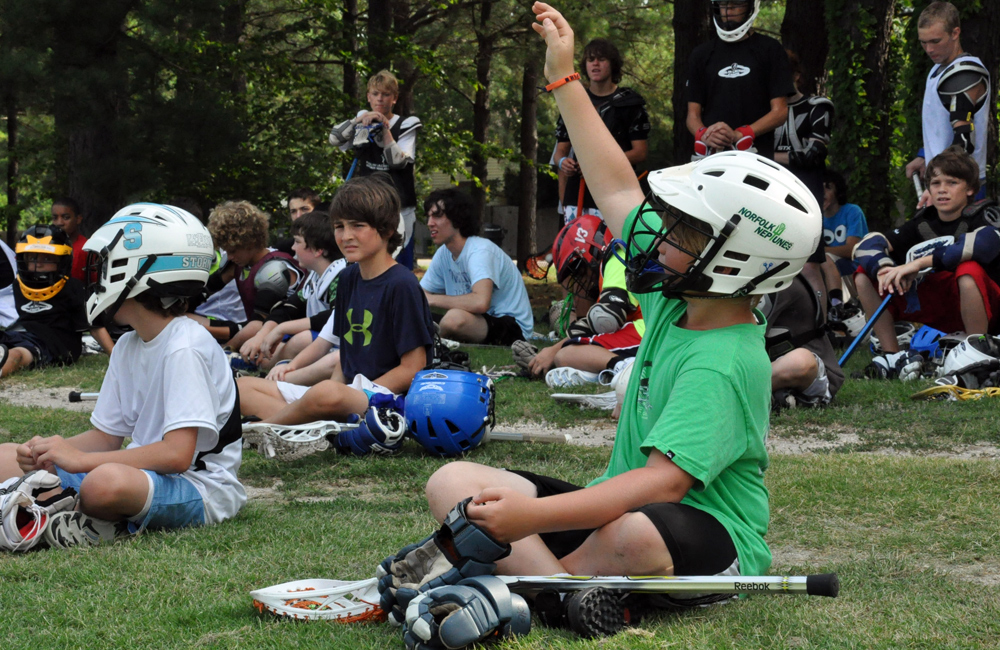
June:
– 8-9: Lax Inception
– 28: Lax for the Cure
– 30- July 7: Vail Shootout On the 40th anniversary of the Vail Shootout, I have to plug for this tournament. Everyone who plays is crazy about it. Age brackets start at U8 and go to infinity (so it seems). This is a great atmosphere, and worth the trip.
July
– 12-14: Club National Championships. You bet a lot of coaches will be at this one.
– 19-21: All-Star Express. This tournament is fun–it’s always a favorite for younger players.
– 21-23: Capitol Cup This tournament has a great reputation, and attracts teams from across the country.
Feel free to comment if you want to plug for a tournament. Good luck in club season.
How The West Won

grizzly calls: too many to count
grizzly humor: infinite.
My team just came back from four days at the WCLA National Tournament in Colorado Springs. This is Virginia’s second year at Nationals and we went 2-2. In the normal season under our usual conditions, this would be unacceptable. But at this level, in the conditions we experienced (hail, slip and slide field conditions, altitude, tough mudders in the eight meter) I’m tempted to cut our losses and slip into the summer hiatus…. Or I’ll think about it, incessantly… for a long time. To become better, we have to learn from our mistakes.
Usually I’m a no-excuses player. I remember my first varsity lacrosse tryout was in the snow. At the time I had horrendous stick skills and a pretty questionable perception of what the rules were. The weather, for me, was perfect. I was athletic, determined, and technically deficient. It was simple. So today, looking back on my fourteen year-old self–I wonder what changed. Our team is fast. Our team is skilled. We won the regional championship by ten goals, beating out Virginia Tech and University of Maryland. We’re very good at east coast lacrosse—and maybe that’s the problem.
The rules have changed. In the WCLA (club women’s college) we play by USL rules—different from NCAA. The sphere around the head is larger, limiting checking even further (yes, unbelievably so, women’s lacrosse can get more lame). This is strictly enforced in the western conferences and Texas; on the east coast, most refs are accustomed to NCAA rules: the sphere is small, checking is mostly always legal, physical contact is allowed. The west is a different game. A low check from a hanging stick is usually always a foul or “across body” regardless of the fact the attackers cradle resembles the earth’s orbit around the sun. This is frustrating from a technical standpoint—good stick skills are no longer an essential, but an added bonus. Defense is harder; the games are higher scoring; the game is disjointed, punctuated by whistle after whistle.
“Guys, let’s just play our game” we’d say from the huddle—but we couldn’t, not like we were used to. The weather and rules affect all.
At first glance I hate the new rules. They diminish the value of creative stick work—of dodges, of quick reactions for a low, satisfying check on the double team. This new game is about footwork, It’s about patience. As the scores of the tournament reflected, all teams are adjusting to the new rules. Our defense is suffering under the incessant cross checking/shooting space/checking into sphere/weird dolphin hand motion calls/poetic license calls. At final glance on this piece, I still hate the rules– But I’ll give a nod to the west coast teams who have mastered the rules and adjusted their game accordingly.
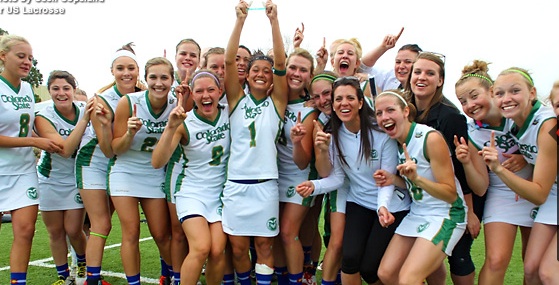
– Shout out to CSU for an incredible season–
Is a Shortage of Youth Referees Hurting the Game?
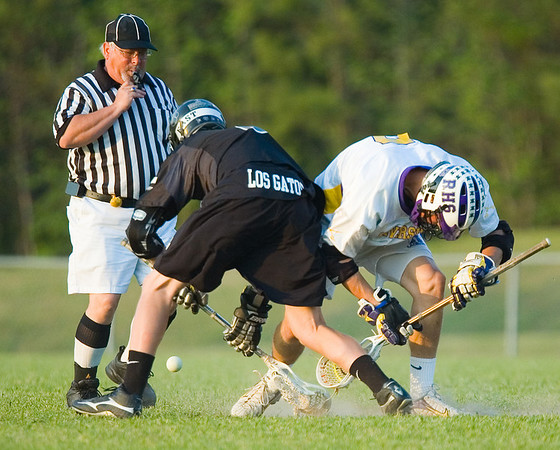 Last night, my U-13 West End Warriors went to battle with a team from across town known for their polished stick skills and outstanding conditioning. We were the underdogs from the first face-off, and fell to Robius 5-2.
Last night, my U-13 West End Warriors went to battle with a team from across town known for their polished stick skills and outstanding conditioning. We were the underdogs from the first face-off, and fell to Robius 5-2.
Our kids played well in a game that could be described as sloppy and a bit out of control. I’ve never been one to bicker about referees. I’ve always supported the notion that nothing I do or say is going to alter the calls they make. But in a David versus Goliath kind of showdown, we never stood a chance, and much of this was due to the two men wearing black and white pin stripes.
Two of our opponents’ goals game while their attackmen were clearly in the crease. The first was on a fast break situation, and both officials couldn’t make it past the midfield line before their player took the shot. They were out of shape and out of position. The second came off of a set play, yet still, one referee trotted above the midfield line while the other stood firmly twenty yards away from the action. I was closer to the crease from my spot on the sideline and could blatantly see their player slide through the crease.
But the biggest call came in the third quarter when we were trailing by just one goal. Their player sprinted up the sideline and our defensemen gave him a body check from the side. One referee was literally three feet from the play and deemed it a legal play while the other threw a flag from the other side of the field. This led to a man-up goal situation for Robius and we could never regain momentum.
After the game, the director of officiating came up to me and apologized. He explained that there is a shortage of referees in our region and agreed that they missed a few calls. I constantly tell my kids to play with sportsmanship and integrity, but last night, nothing seemed to give. I can’t say that we would have won the game with better officials, but it would have certainly been more competitive. On to the next one!
In Defense of Music
It’s 10:30 PM and the lights are on but the park is empty. All teams at the Pomerstone Classic have gone home for the night. Except mine. From far away you can see us clustered around in a circle—probably reviewing the three games we played that day, possibly talking strategy for our two games tomorrow.
But walk closer and you’ll see–we’re dancing.
My team never goes without music. Whether it’s practice, warm-ups, or celebration post-game our speaker is always blaring. Many coaches and players find music distracting and unprofessional. It’s hard to yell orders or directions when you’re fighting Avici or Diplo for the airwaves. How, they ask, can you keep your players calm and collected before a game if their mind isn’t clear? They cite studies claiming multi-tasking (e.g. trying to warm up and prep and listen) detracts from the caliber of production.
But lacrosse isn’t about production. There’s no right mathematical formula or combination for winning a game. The game is rhythmic; more art than science. Focus and concentration are essential, but if you play for the love of the game, those take care of themselves. I play best when I’m loose and relaxed.
To all those teams and coaches that hate on music before a game, I offer only our record and my sincerest apologies. Because your team isn’t having as much fun as ours 😉
Good luck on your season. Keep posted for an epic warm up play list.
The Post-Game: You vs. DOMS
We played three games back to back on Saturday down in Roanoke in the Virginia Tech Tournament. In spite of generally crushing it on the field (#winning) like a champ, I woke up on Sunday feeling more slightly less than an ATH.
The morning after a big day is a delicate period where many crucial decisions must be made. Do you get out of bed? Can you? And why don’t you remember getting hit by train? While it’s tempting to linger in bed clutching ice packs to your quads, casually tweeting about how your body hates you, don’t. This is detrimental to your followership and your body. While yesterday was about you wracking up GB stats, today is about you and DOMS. DOMS is a classically painful third wheel: arrives uninvited, wedges itself obnoxiously between you and your sweet win, and overstays it’s welcome. DOMS, delayed onset muscle soreness, is the well-known ache you feel starting 12-24 hours after intense exercise. It tends to worsen, peaking anywhere from 24-72 hours later. That’s right, the train wreck feeling is here to stay for up to three days. If you let it.
To combat DOMS and properly take care of your body, you need a regeneration workout the day after. Regen combines low intensity cardio and flexibility training to aid muscular recovery.
Regeneration Workout
1) Dynamic stretching. (10 min) This entails movement. You want to loosen up your major muscle groups without placing unnecessary strain on your body.
2) Cardio (Low intensity, 20 min) You need to get blood flowing; Cardiovascular exercises is any type of exercise that uses major muscles groups to perform repetitive movements. This can be running, any kind of cross training like cycling or elliptical or swimming. It’s going to hurt for the first couple minutes, but plays a fundamental role in breaking up the lactic acid build up in your muscles and distributing it throughout your body.
3) Myofascial Release aka Foam Rolling (10 min)
Every athlete should own a foam roller. They’ve been used for decades with pros and are becoming increasingly common in the fitness world, but most high school and youth athletes don’t know about foam rolling. The concept is that intense periods of pressure and release work out knots in the tissue to relieve tension and prevent injury. Target your quads, glutes, hamstrings, calves, IT band, and lats. Lat rolling feels strange, but you’re using this muscle ground every time you throw, shoot, etc.
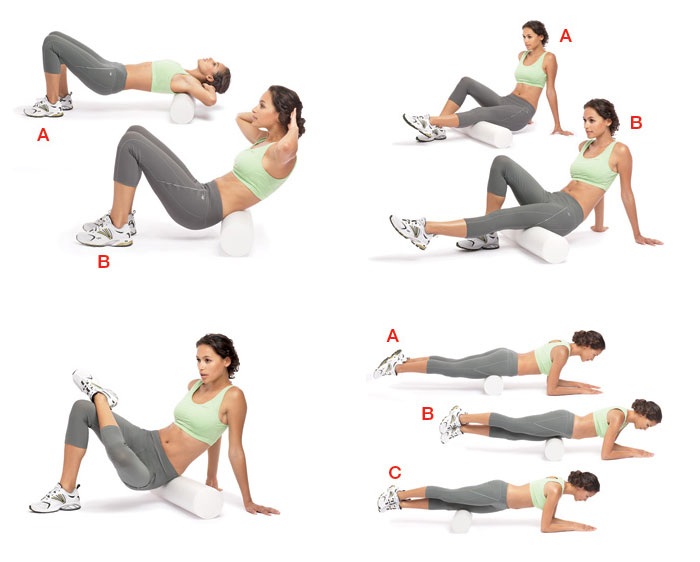
4) Some passive stretching. What you would typically consider stretching. Do this last to prevent injury and strain.
I did Regen Sunday morning, and felt infinitely better on Monday. It’s easy to love the pre-game and natural to love the game itself. Learn to love the post-game, and your body will thank you.
New Lacrosse Swag Represents Growth for the Sport
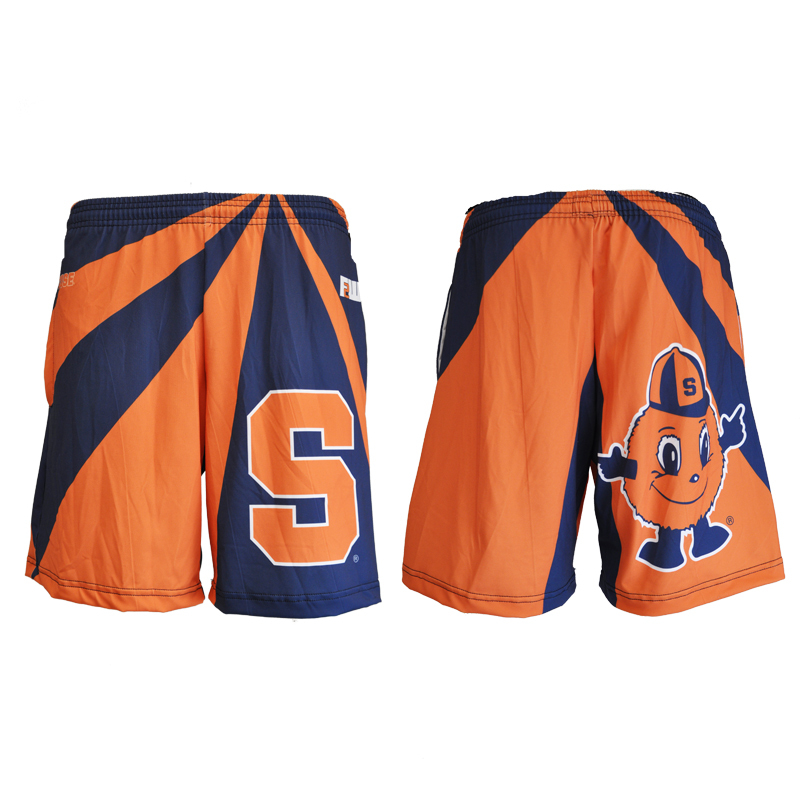 As a youngster, suiting up for lacrosse practice was a simple and conservative affair. I grabbed a pair of beat up shorts, an old school penny from my brother’s closet, and some second hand equipment from Play It Again Sports.
As a youngster, suiting up for lacrosse practice was a simple and conservative affair. I grabbed a pair of beat up shorts, an old school penny from my brother’s closet, and some second hand equipment from Play It Again Sports.
To say that things have changed would be an understatement.
An average youth practice nowadays resembles an 80’s rock concert. Flashy neon shorts, striped ankle socks, and florescent cleats are a common sighting.
And this new swag isn’t being produced by brands that only lax bros would identify with. Nike, Reebok and Adidas have all made a major splash in the lacrosse market.
I recently made a trip to Dicks Sporting Goods to grab a few things. I was blown away when I noticed the lacrosse section that dominated the entire front corner of the store. Just ten years ago, outside of a specialized distributor, it was impossible to find anything related to the fastest game on two feet.. This is a great testament to the growth of lacrosse throughout the United States.
Today, kids that play lacrosse carry a certain swagger that separates them from the rest of the pack. The clothing is branded to fit this mold, and naturally brings attention to the sport we all love and cherish. Some may argue that this is cocky or flashy, but personally, I love it. A shaggy haired teenager rocking a pair of multicolored shorts will never be mistaken for a baseball player, a fact that rests easy in the minds of lacrosse supporters nationwide.
Anyone that has ever picked up a stick has always known how special our sport is. But for years, lacrosse struggled to gain national interest like football, basketball and even soccer. (Yes, I can’t believe I said it.)
But now, it is relevant. The evolution of lacrosse is upon us, and I’m along for the ride.
If you’re looking to jump on board and grab yourself some new lacrosse swag, ComLax.com has plenty of options for you, including the Syracuse lacrosse shorts pictured above. Head over to the ComLax apparel section to check out their full line of swag. Use the coupon code ABLACROSSE when you check out and save 10% on select items from your purchase, not a bad deal for new swag!
Building a Pocket: Find the Sweet Spot
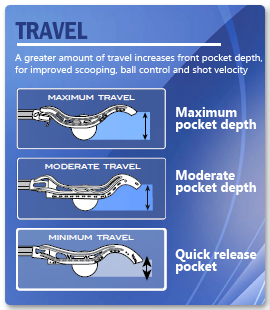
Crafting the perfect pocket is an art. There’s a fine line between a creating a masterpiece and breaking the rules. Thankfully, women’s sticks have come a long way since the wooden, pancake flat tennis rackets of yore. Composite materials lighten the shaft, angled necks facilitate stronger shooting, and tapered, textured shafts aid grip. Actual shooting strings emerged, improving accuracy and adding whip. There is a lot of new technology available for women now–My stick has the gripper pro stringing, which prevents the ball from slipping and helps direct passes and improve accuracy.
Even with all of this, I’ve always been jealous of the Men’s pocket. In middle school all my guy friends lax-bros-in-training were on an eternal quest to build a bigger, better pocket. They softened their heads in the microwave, meticulously pinching them shut to minimize the surface area for checking. They watched YouTube videos of DIY pocket pounders, and sat in the back of every class -pounding the netting until the teacher told them to stop. Repeatedly. A one-inch adjustment of my strings before a game resulted in the inevitable scramble to retighten at the end of the warm up. Sometimes, you just wanna cheat the system.
While it might be easy to slyly tug on the bottom strings of your stick right before the ref plops the ball in for final judgment, this could have disastrous consequences later (sorry Florida). Some refs are oblivious to life*; the only lacrosse exposure they’ve had was that brief scene in the end of Mean Girls when a behaviorally reformed Regina George barrels down the field, stick in hand, wearing something that resembles a basketball uniform. In 2004. Then they saw a “referees wanted” ad on craigslist in 2012. And now they’re your ref. Said refs will not be concerned about checking your pocket after a goal. They’ll just be trying to figure out what a goal is. However, there are other refs who will care. These refs sleep with the USL rulebook under their pillow, and check USL website daily for new rule interpretations. They will care so much about the state of your pocket that they will check after EVERY goal (I’ve experienced this in high school and college). They will also measure the length of your stick, and the angle of the pocket against a table (this happened to me while playing in Santa Barbara in February).
For the sake of these refs, and your development as a player (too big of a pocket is a stick skills crutch) build your pocket right. The trick to building a pocket is that you want to minimize the slack in the narrow portion of the head near the neck. That’s where the ref is going to check to ensure that the ball is visible above the sidewall. This is fine. You don’t want a pocket there anyways; at no time during play should the ball live near the neck. It doesn’t matter if you’re a middie or a defender; you should be cradling and releasing from the sweet spot right below the bridge of your first shooting string. This is the only place you want a pocket. So…. (1) get your stick wet (2) tighten all the string all the way (3) Get a ball and nestle it in the sweet spot right below the 1st shooting string (4) Wrap rubber bands, hair things, whatever you need to keep the ball in place (5) Let your stick dry, hanging off a level surface over night (to ensure the ball doesn’t slip). Do this a couple times a month, or after you play in wet weather to maintain your pocket, and you’ll be golden.
Goalie Matt Roik Ejected After Glove Inspection
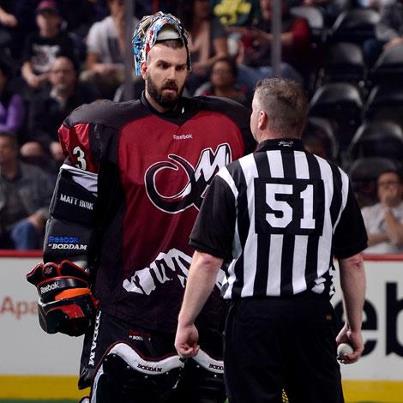 Last Saturday night, in an unusual series of events, Colorado Mammoth goalie Matt Roik was ejected from the game with 6:29 remaining after a glove check.
Last Saturday night, in an unusual series of events, Colorado Mammoth goalie Matt Roik was ejected from the game with 6:29 remaining after a glove check.
Minnesota Swarm coach Joe Sullivan called for the check when he noticed something unusual on Roik’s glove. The timing was convenient, with the Mammoth leading the contest by five goals.
The officials on the floor examined Roik’s glove, then discussed the situation with each other. After a bit of a delay, the officials issues a two minute penalty to Roik, along with a game misconduct.
Roik was definitely aggravated by the events which has transpired. The ruling from the officials cited NLL Rule 35, seen below, which discusses the prohibition of adding any bulk to a goalie’s equipment.
Padding may not be added to or on the outside of the glove unless prior approval by the league.
Of course the biggest question mark of the statement is where it mentions prior approval by the league. Roik received permission from the league for his modified glove, but that was back in 2010 as a member of the Washington Stealth. According to the NLL, Roik should have received additional approval prior to each season in order to use the glove without issue.
The league was on the hot seat after this ejection, especially due to the timing. According to a statement released by the NLL, ”it should be noted that by league Rule 88.4, the inspection should have taken place immediately following the conclusion of the quarter, and not during the quarter.” Because of this, Roik was wrongly ejected from the game.
Roik was additionally served a $250 fine for the incident, however, he has the right to appeal.
Share your thoughts with us about this ejection. Do you think Roik should have been booted from the game or is he right to continue to use his padded glove?
Richard Prakopcyk to be Inducted into NJLHF
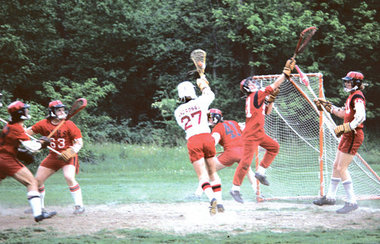 The New Jersey Lacrosse Hall of Fame will be inducting a former Rutgers star in its 2013 class. Richard Prakopcyk, who attended Rutgers and excelled in Varsity lacrosse during the late 1970’s, will officially be inducted on Sunday, January 27th. The ceremony will take place at Mercer Oaks Country Club in Princeton Junction, N.J.
The New Jersey Lacrosse Hall of Fame will be inducting a former Rutgers star in its 2013 class. Richard Prakopcyk, who attended Rutgers and excelled in Varsity lacrosse during the late 1970’s, will officially be inducted on Sunday, January 27th. The ceremony will take place at Mercer Oaks Country Club in Princeton Junction, N.J.
Prakopcyk began his lacrosse career at Hunterdon Central High School and then moved on to Rutgers University. He had quite a career at Rutgers, playing on the squad from 1975 – 1978. In his final year of play, Prakopcyk was captain of the team, and was awarded the Robert Collett Award. This award was given to the Rutgers lacrosse player who displays the best mental and physical spirit throughout the course of the season.
Since graduating from Rutgers, Prakopcyk has gone on to become a coach and mentor for youth lacrosse programs. He has coached the Youth Warriors out of Bethlehem, N.J. since 1999 and assisted North Hunterdon High School lacrosse teams with their offseason programs. He began assisting Hunterdon in 2003.
Congratulations to Richard Prakopcyk for this high honor!


